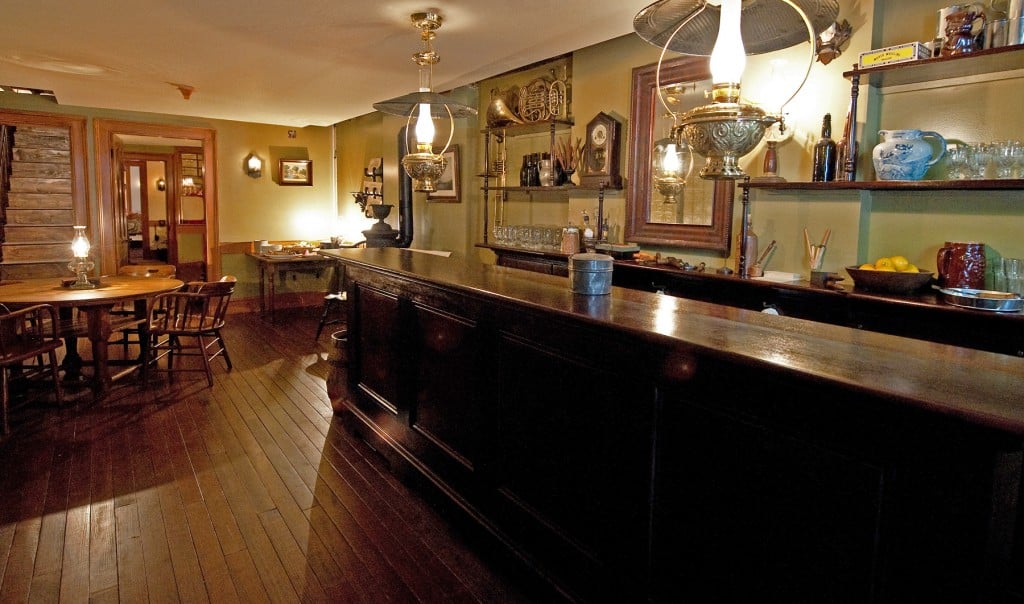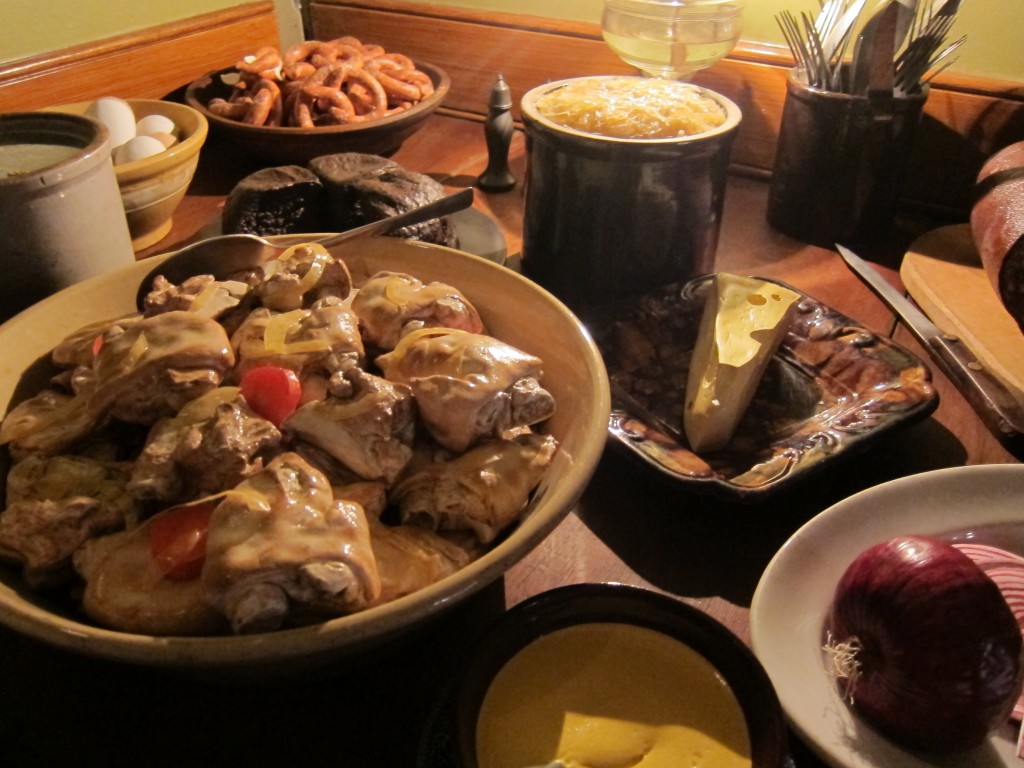Blog Archive
The Official Launch of “Shop Life”!
After ten months of painstaking construction, our Shop Life exhibit officially opens today! The exhibit takes a look at the businesses once located in our Tenement, using both re-created spaces and new technologies.
Guided tours of Shop Life begin as visitors step through the door to 97 Orchard Street and into the warm, lamp-lit world of a 19th-century saloon. Once run by John and Caroline Schneider, the re-created saloon is accurate down to the last apple core and beer glass. These details create an extraordinary immersive experience.
The Museum’s Curator Pamela Keech was the mastermind behind the Saloon’s beautiful furnishings and details. She selected antique objects from sources far and wide and chose paint colors based on layers found on site during construction. She answered a few questions about the process of bringing the long-closed saloon back to life.
What research went into your recreating the food for the Schneider saloon?
First we made menus, one for the free lunch and another for the family food cooking in the kitchen. To put them together I reviewed many accounts of free lunches in saloons, looking for German based saloons. I also looked at cookbooks, principally Pickled Herring and Pumpkin Pie: A Nineteenth-Century Cookbook for German Immigrants by Henriette Davidis. We made long lists of the possibilities then chose dishes that appeared frequently like sausages, pretzels, and swiss cheese.
What was your prototyping process to find the perfect materials and finishes for realistic-looking food?
All the food started out with real foods. Our historic food specialist, Sarah Lohman, made sauerbraten, heaven and earth, pigs feet, and lebkuchen. I bought blood sausage and weisswurst at a German deli. Historic faux food artist Sandy Levins then took it all away, made molds and plaster casts, or carved and painted foam. Her finished work is amazing.
How did you come up with the “compost bin” by the Schneider stove?
It is a slop pail. Every kitchen had one, it was simply a place to put the garbage. In rural areas the contents would have been fed to the livestock, most likely the pigs. In the city it was thrown into the street, the rear yard, the river, whatever. And then the urban pigs ate it. In order to make it, Sandy Levins took a coal bucket and filled it with faux garbage. The onion skins, eggshells, and grape stems are real, they were freeze dried then put in. The rest is fake.
What were some of the trickiest design choices for you in “Shop Life”?
The bar and back bar required the most research. We found only a handful of images for bars in the early 1870s, mostly newspaper illustrations. There were no photos from the period. Bars of the period were very simple, no big mirrors or tall columns. I made a design drawing, then we worked with the restoration carpenter to construct it.
“Shop Life” tickets are available online here. We hope you’ll visit soon!
— Posted by Amanda Murray and Kira Garcia


